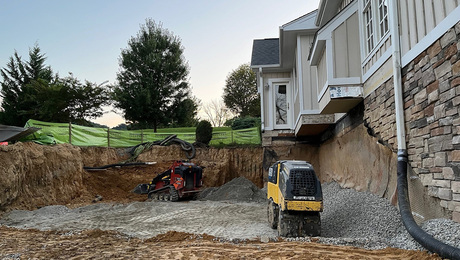
Preliminary results in a four-year Department of Energy (DOE) field study show new single-family homes are, on average, meeting or exceeding requirements of local energy codes.
The findings cover six of eight states that are included in the Residential
Energy-Code Field Study, which was announced by the department last year. The study is to span four years, beginning with a baseline field study in the first year, followed by training in years two and three, and a follow-up field study in the final year.
Preliminary findings released by DOE last month suggest that while previous studies showed low compliance with energy codes, this time around most new homes are doing better than expected on a number of fronts, according to a summary of the findings posted by Builder Online.
Over the past 12 months, data collectors visited new, unoccupied houses in eight states–Texas, Arkansas, Kentucky, Alabama, Georgia, North Carolina, Maryland, and Pennsylvania. They gathered information on lighting efficiency, window U-factors and solar heat gain coefficients, envelope airtightness, duct leakage, and how well framed walls and foundations were insulated.
The baseline code in most of the states was the 2009 version of the International Energy Conservation Code (only Maryland has adopted the 2015 version of the IECC, and North Carolina uses a state code). The number of houses researchers visited ranged from a low of 133 in Texas to a high of 249 in North Carolina.
What researchers learned
A DOE presentation of the findings and the Builder Online report made these points:
- Windows were consistently better than required by code. No state had more than three observations where windows didn’t meet code requirements.
- Compliance with lighting efficiency requirements was inconsistent. The 2009 IECC requires 50% high-efficacy lighting, which includes fluorescent and LED fixtures. Observers found some homes had all high-efficacy lighting, and about the same number having none; the rest fell somewhere in the middle.
- The amount of wall insulation was almost always exactly compliant with code, R-13 to R-20, depending on the Climate Zone.
- New houses met or exceeded the requirements for airtightness in all states, with a “high percentage” of observations ranging between 4 and 6 ACH50 (the 2009 IECC standard is 7 ach50.)
- No area was consistently worse than code.
The Builder Online report was written by Ryan Meres, whose organization, the Institute for Market Transformation, collected information in Alabama.
He wrote: “Overall, the initial data and analysis coming out of DOE’s Residential Energy Code Field Study demonstrate the success of energy codes as an effective policy tool for driving energy efficiency in the single-family residential housing market. It also demonstrates the diligence of builders and local building officials in ensuring compliance with the energy codes adopted in their states.”
Findings suggest builders should be paying particular attention to the type of lighting they install, and to requirements for duct and building envelope tightness, which get tougher with new versions of the code, Meres said.
Read more: http://www.greenbuildingadvisor.com/blogs/dept/green-building-news%2A#ixzz3wP5oX7Ay
Follow us: @gbadvisor on Twitter | GreenBuildingAdvisor on Facebook
Fine Homebuilding Recommended Products
Fine Homebuilding receives a commission for items purchased through links on this site, including Amazon Associates and other affiliate advertising programs.

Reliable Crimp Connectors

8067 All-Weather Flashing Tape

Affordable IR Camera

Airtightness, as measured by a blower door, is one piece of information field testers gathered in states included in the Department of Energy study. A high percentage of new homes in sample states are meeting at least older versions of the International Energy Conservation Code.

























